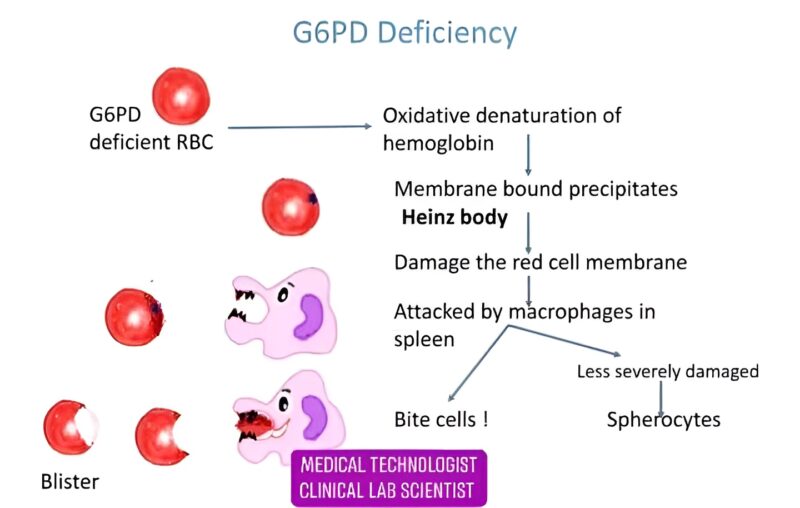
Omar Adwan on G6PD Deficiency: Protecting Red Blood Cells from Oxidative Stress
Omar Adwan, Medical Laboratory Technologist of Modawah lab center, shared an insightful post on LinkedIn:
“G6PD (Glucose-6-Phosphate Dehydrogenase):
Genetic disorder that affects the enzyme responsible for protecting red blood cells from oxidative damage.
1. Normal Function: G6PD enzyme helps maintain the integrity of red blood cells by protecting them from oxidative stress.
2. Deficiency: In G6PD deficiency, the enzyme is either partially or completely inactive, making red blood cells more susceptible to oxidative damage.
Oxidative Stress: Red blood cells are vulnerable to oxidative stress, which can trigger hemolysis (red blood cell destruction).
Hemolytic Anemia: Repeated episodes of hemolysis can lead to anemia, characterized by fatigue, weakness, and shortness of breath.
Characteristic Features
1. Heinz Bodies: Small, rounded inclusions within red blood cells, composed of denatured hemoglobin.
2. Bite Cells: Red blood cells with a ‘bitten’ appearance, resulting from the removal of Heinz bodies by the spleen.
3. Blister Cells: Red blood cells with a characteristic ‘blister’ or vacuole.
4. Reticulocytosis: An increased production of red blood cells by the bone marrow to compensate for the loss of red blood cells due to hemolysis.
Triggers
1. Infections: Certain infections can trigger hemolysis in individuals with G6PD deficiency.
2. Medications: Certain medications, such as antimalarials or sulfonamides, can induce hemolysis.
3. Foods: Some foods, like fava beans, can trigger hemolysis”

Stay updated with Haemostasis Today.
-
Nov 19, 2025, 18:03Andres Ricaurte Fajardo on a Strongyloides Stercoralis Hyperinfection with Thrombosis
-
Nov 19, 2025, 17:50Marilena Vrana Reflects on PPTA Europe’s Visits with Members and Stakeholders in 2025
-
Nov 19, 2025, 17:32Michael Makris Shares Insights from Global Forum Meeting of the WFH Meeting in Montreal
-
Nov 19, 2025, 17:14Yazan Abou Ismail Takes The Legacy Award from Qatar Foundation
-
Nov 19, 2025, 17:02Wolfgang Miesbach Shares Real-World Evidence on Eptacog Beta from Spain
-
Nov 19, 2025, 16:34Ishita Singh Reflects on Haematocon 2025: A Reminder of Her Commitment to The Journey
-
Nov 19, 2025, 16:23Mehdi Kashani: I’m Really Excited to Share Schistosite.com
-
Nov 19, 2025, 16:09A ”Meow-cyte” from Melaku Abay Muluneh or Why Microscopy Never Gets Old!
-
Nov 19, 2025, 15:56Cuilan Li on her Contribution to a Cutting-Edge Project in Polycythemia Vera
